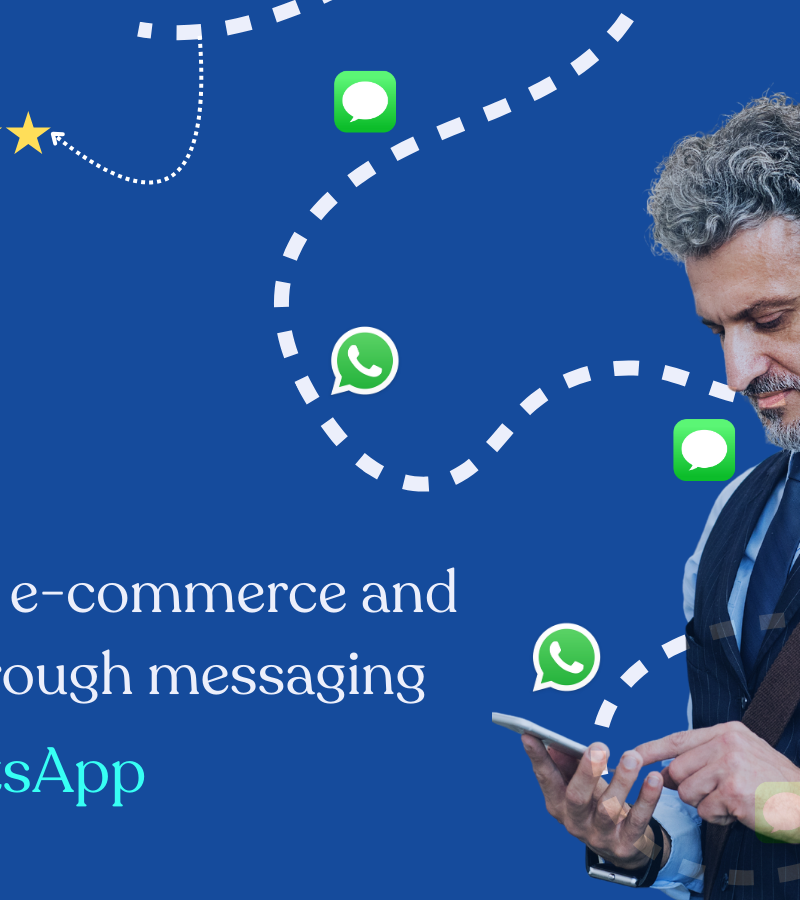
There are many aspects to why people do not show up for an appointment. So called ‘no-shows’, can negatively impact organisations from different sectors such as healthcare, beauty, and logistics. Due to reasons ranging from revenue loss, to scheduling issues and wasted employee working hours, most organisations are in search of methods to decrease rates of these no-shows. This article will list the consequences of no-shows to organisations and explain how they can be reduced via appointment reminders - and what role SMS can play in the appointment reminding sequence. It will also end with the most efficient ways of sending these text appointment reminders regarding content and frequency.
What is a 'no-show'?
A "no-show" is common phrasing used to cover appointments that customers or patients do not end up showing up to without prior notice - or at least notice not early enough to reschedule or book another appointment at the same time. Simply put; a no-show is a missed appointment. When you are the person who is choosing not to show up to an appointment or forgetting to do so, they may seem harmless. However, for an organisation, they are one of the most costly and hurtful instances for a variety of reasons, eventually hurting the financial stability of said organisation. They are quite common through many sectors, but are most commonly seen in the news for missed appointments in healthcare. It is reported that there is up to a 42% missed appointment rate in healthcare settings globally.
Forgetfulness remains the predominant reason for these no-shows according to research. Research conducted by Accurx and BioMed Central therefore stresses the importance of effective reminder systems to reduce no-shows. They state that improving communication, such as using SMS reminders, can significantly decrease the rate of missed appointments.
Many instances of no-shows are reported on the news as well. One out of twenty appointments are missed at Dutch hospital Rijnstate in Arnhem. A spokesperson states that the waiting lists are getting longer and longer while their agendas have unnecessary gaps. They also add that it is not possible to fill these gaps easily since they only can know when a person is not going to show up at the time of their appointment. “Preventing no-shows is important,” says a spokesperson for the Dutch Hospital Association, “to prevent wasting time and money.” You can read the rest of the news article here in Dutch.
How do no-shows or missed appointments affect organisations?
Revenue related consequences of no-shows
The most hurtful thing that no-shows cause is a great revenue loss. There are many studies that discuss how much they cost each type of sector globally or by country. For example, hair salons in the United Kingdom (UK) lose at least 1.2 billion pounds in revenue per year from no-shows. Considering that the total revenue of UK hair salons per year was calculated to be 4 billion pounds, this loss is quite significant. For the healthcare industry, a study published in the National Library of Medicine found that reducing patient no-shows to 5% (from the aforementioned 42%) would increase revenue by $51,769.00 in 2020. Neither of these numbers are numbers to overlook. Therefore, reducing no-show rates is crucial for organisations.
Time and scheduling-related consequences of no-shows
In general, no-shows create a missed time slot in schedules. Each missed appointment is a missed opportunity for the organisation. In addition, these time slots are time that could have been offered to other clients or patients. These types of empty time slots can lead to working time spent on nothing. They also take away from the paid working hours of employees.
Patient related consequences of no-shows: healthcare
In cases of no-shows related to healthcare organisations, they might be crucial, especially for the patient. For example, in the case of a patient with a chronic condition who needs to visit the hospital regularly, a missed appointment might be highly significant for health. This patient might not be able to schedule another appointment for a longer time than expected leading to their regularly necessary check not being done on time. In addition, since regular check-ups are usually scheduled much earlier than when the appointment actually takes place, they are more likely to be forgotten or missed.
In addition, missed time slots can significantly impact waiting lists. Due to schedule gaps, longer waiting times and lists can occur. These lists have a direct impact on the health of people in need for a surgery or a specific treatment.
In this case, a no-show does not only affect the organisation but the patient themselves.
Organisation-related consequences of no-shows: beauty or hair salons
The loss caused by no-shows might be overlooked when it comes to usually smaller organisations such as beauty salons. However, they are also crucial in this case. Missed appointments lead to products used in preparation for an appointment in addition to the hours the employee 'wasted'.
Furthermore, no-shows in beauty salons are highly likely to take place due to the fact that they are not as crucial to the customer's health as doctor appointments are. For example, research done among more than 1k women in London found that 30% of these women had not attended a scheduled appointment at least once.
Consequences of no-shows to the logistics sector
Missed door delivery appointments are certainly also a burden on the logistics sector. This would cost a package delivery company money for the gas used to transport the package, the time the delivery person spent, and the time and gas spent to take the delivery to a service point. Although the cost of this whole process differs per country, the significance of no-shows here also goes without saying.

Using SMS or text appointment reminders to reduce no-shows
Appointment reminders repeatedly have proven to be an effective way of reducing no-shows through a large scale of different sectors. Many research including one from the National Library of Medicine demonstrate with detailed scientific methodology that appointment reminders are an effective and operative method of improving appointment attendance. In addition, another paper reviewed several studies to see the effectiveness of appointment reminders. It found that 95% of the studies reviewed reported a positive effect of reminders on appointment attendance rates. In addition, the authors calculated a 41% reduction in missed appointment rates throughout all of the reviewed research.
An appointment reminder can help prevent many consequences of no-shows. First of all, they effectively remind the customer or patient that they have something planned on a specific time slot. This means that the person is less likely to schedule something else on the same time slot, thus, is less likely to have to choose between two appointments. Secondly, when the time of the appointment is near, the reminder receiver is more likely to actually show up on time to the right location. Thirdly, these reminders also give customers or patients a chance to contact organisations in order to reschedule their appointments in the case that they really need to do so. This way, organisations can achieve more effective scheduling methods with which no time slot goes to waste.
Combining communication platforms for appointment reminders
A combination of communication platforms is always the way to remind customers/patients of their scheduled appointments. As traditional platforms go, email is one of the most common ways to reach out to customers for confirmation of their appointments and also to send appointment reminders. However, since email tends to get easily overlooked, sending SMS messages to go along with them will be the most effective way of making sure you do not miss any part of your customers/patients. You could even notify them about the reminder via email.
In addition, with an SMS, you can direct the person to a link. This way, you can keep your service call lines shorter. In the link to direct people, you can have a form to send to choose whether the customer/patient will be attending the appointment or a way to reschedule the appointment. This way, you also relieve your service teams from the job of having to keep count of confirmations or reschedules over the phone.
What to include in appointment reminders to reduce missed appointments?
There are a few things that you can do in order to send the most effective appointment reminder and reduce no-shows. One of these is to include the following information in your reminder.
Details of the appointment
To make sure your customer/patient is aware of the right information regarding their appointment, you should include details in your SMS appointment reminder. These information include: date, time, location, contact details, and type of appointment/treatment.
Personalisation of the reminder text
Automated text messages are much more likely to be ignored than personalised messages. Therefore, it is important to make sure your appointment reminders are addressed to the person and personalised. You can add their name in the message as an address. In addition, you can add the name of the person they have an appointment with as a sign-off. This way, the receiver of the appointment reminder will view the SMS as more of an invite rather than an automated message.
Precise location of the appointment
If there is a possibility that your patients/clients are coming to your establishment for the first time: a precise location via a Google Maps link might be useful.
Now with the rise of messaging channels such as WhatsApp, this is even more possible. If these types of precise locations are necessary; in combination with SMS reminders, WhatsApp reminders can also be utilised. It should still be noted that to be able to send a WhatsApp appointment reminder, it is required to get the opt-in of your customer/patient first. Of course, this should not be a problem in the case of returning customers or patients that have the necessity to regularly visit the hospital.
Option to opt-out or reschedule the appointment
Adding a question of whether the patient/customer can make the appointment or not, might help resolve scheduling conflicts. If they need to reschedule, this is also possible! The option to opt-out or confirm can be achieved via a form link included in the appointment reminder text message as previously mentioned.
Necessary documents to bring to the appointment
Sharing what they have to bring to the appointment (e.g. blood test results or simply their insurance card etc.) will help with making sure the appointment time is used efficiently. This is especially significant in cases of healthcare no-shows.
What is the best frequency to be sending SMS appointment reminders?
We have clearly established the fact that SMS appointment reminders are an effective way of reducing missed appointments and discussed the contents of an appointment reminder. The last thing to be discussed is the frequency of SMS reminders. What is the best way to reduce no-shows?
To be able to effectively go about sending SMS appointment reminders, you would want them to be frequent enough but also not annoy the patient/customer by being sent excessively. To be able to achieve this balance, the most common and effective method is what is called a 3-3-3 method according to a recent study.

- 3 weeks before the appointment
In this case, you would want to send your first appointment reminder 3 weeks before the appointment takes place. This text message gives the receiver enough time to decide to reschedule and arrange a date and time that can actually work for them.
- 3-5 days before the appointment
With 3-5 days left until the appointment, the customer/patient is more likely to know, compared to the 3 week ahead reminder, about possible scheduling conflicts. These 3-5 days are significant since they give the receiver enough time to sort out these scheduling conflicts. This message increases confirmation rates up to 26%.
- 3 hours before the appointment
This message reminder will not affect confirmation rates. However, as most people are usually busy with daily tasks during the day itself - they are more likely to overlook an appointment they scheduled earlier and confirmed. The 3 hours before appointment reminder is important because if the time-frame is shorter, there is a possibility that the person will not be able to arrange other work and travel time for the appointment. 3 hours is a good timing for the receiver to arrange last-minute clashes and also transport to your appointment location.
Diversify your appointment reminders per various departments and demographics
It is also a beneficial idea to diversify your appointment reminders depending on which demographics or departments you are targeting. For example, it is more likely for the elderly to forget their appointment than younger age groups in most cases. However, insights from multiple Spryng customers on different departments and no-show rates find that pedagogy, psychology, and psychiatry departments have higher no-show rates compared to the rest. This suggests that maybe the focus should also be on children and younger patients when it comes to psychological treatments.
This is the case when it comes to healthcare of course. In the case of beauty salons, millennials were found to be the worst offenders when it comes to no-shows. This means that personalisation of appointment reminders can be done by targeting messaging trends that millennials use more in order to decrease no-shows more effectively for beauty salons.
It is not too late to start sending SMS appointment reminders and reduce your no-show rates!
With Spryng, you can start your appointment reminder journey right now! We offer you SMS and different messaging services such as WhatsApp as well. You can get in contact with one of our experts in order to discuss your interest or which messaging platform would suit you best. Spryng has integrations with nearly all EHR software providers, salon software providers and appointment booking services. Connect your Spryng-account with your provider of choice, and you’re good to go!
Now, you can easily get a quote from this link or talk to an expert from Spryng about possibilities of combining messaging platforms. We are reachable 24/7 in English, Dutch, French, and German. If you would like to start your free trial already, you can do so via here.


